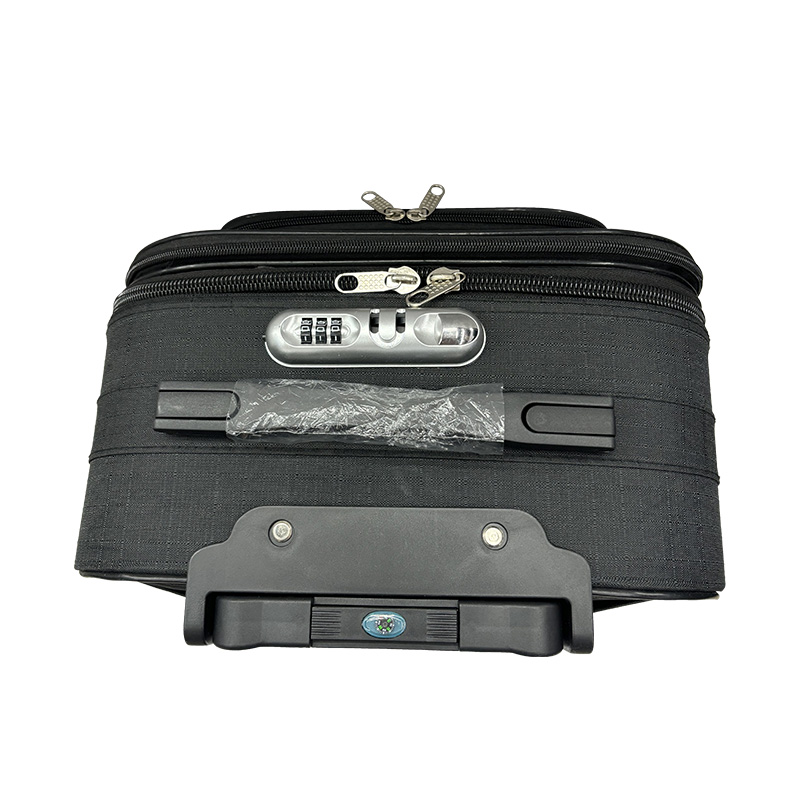 By Admin
By Admin
In the contemporary travel landscape, luggage has evolved significantly, integrating innovations that address both functionality and aesthetics. This article explores two critical aspects of modern luggage: design considerations for universal four-wheeled bags and the raw materials used in crafting a 32-inch side box fabric luggage.

Design Considerations for Four-Wheeled Universal Luggage
Four-wheeled luggage, also known as spinner luggage, has become a popular choice among travelers for its maneuverability and ease of transport. However, designing a high-quality spinner bag involves several considerations to balance practicality with durability.
1. Wheel Design and Placement: One of the foremost considerations in four-wheeled luggage design is the wheel system. Each wheel must be robust enough to support the weight of the bag while providing smooth movement in all directions. Typically, wheels are positioned at the corners of the luggage to enhance stability and allow for effortless 360-degree rotation. The wheel housing must also be reinforced to prevent wear and tear.
2. Handle Mechanism: The extendable handle is another critical element. It should be adjustable to accommodate users of varying heights and lock securely in place to prevent accidental retraction while moving. Ergonomic grips and a sturdy frame are essential to ensure comfortable handling and long-term durability.
3. Material and Structure: The body of four-wheeled luggage is often constructed from materials such as polycarbonate, ABS, or ballistic nylon. Each material offers different benefits in terms of weight, durability, and resistance to impacts. The structural design must ensure that the luggage can withstand the rigors of travel, including handling by airport personnel and rough terrain.
4. Interior Layout: An efficient interior layout is vital for organized packing. Many four-wheeled bags feature multiple compartments, dividers, and pockets to help travelers manage their belongings. The use of high-quality lining materials and secure zippers also enhances the overall functionality and longevity of the bag.
By addressing these design elements, manufacturers can create four-wheeled luggage that not only meets the practical needs of travelers but also stands up to the challenges of frequent use.
Raw Materials in 32-Inch Side Box Fabric Luggage
The 32-inch side box fabric luggage represents a significant segment in the market, known for its spaciousness and versatility. The choice of raw materials plays a crucial role in determining the performance and durability of such luggage.
1. Outer Fabric: The outer fabric of 32-inch side box luggage is typically made from materials such as polyester, nylon, or a blend of synthetic fibers. Polyester is favored for its water resistance and durability, while nylon offers additional resistance to abrasion and tearing. Some premium models use ballistic nylon, known for its high strength and resilience.
2. Reinforcement Materials: To enhance durability, especially in high-stress areas like the base and corners, additional reinforcement materials are often used. These can include tougher synthetic fabrics or rubberized coatings that provide extra protection against impacts and rough handling.
3. Lining: The interior lining of fabric luggage is usually crafted from a lighter, more flexible material such as nylon or polyester. The lining helps to protect contents from scratches and makes cleaning easier. It often includes additional features like organizational pockets and mesh compartments to keep items sorted and accessible.
4. Zippers and Fasteners: High-quality zippers and fasteners are essential components in fabric luggage. These are generally made from durable metals or reinforced plastics that can withstand frequent use. The zippers are often treated to resist water infiltration and ensure smooth operation.
5. Frame and Support Structures: Many fabric luggage pieces incorporate internal frames made from lightweight yet strong materials such as aluminum or plastic composites. These frames provide structure and support, ensuring the luggage maintains its shape and can handle the stresses of travel.
By understanding these design and material considerations, travelers can make informed choices when selecting luggage that suits their needs and preferences. Whether opting for the maneuverability of four-wheeled designs or the practicality of spacious fabric options, the right luggage can enhance the travel experience significantly.